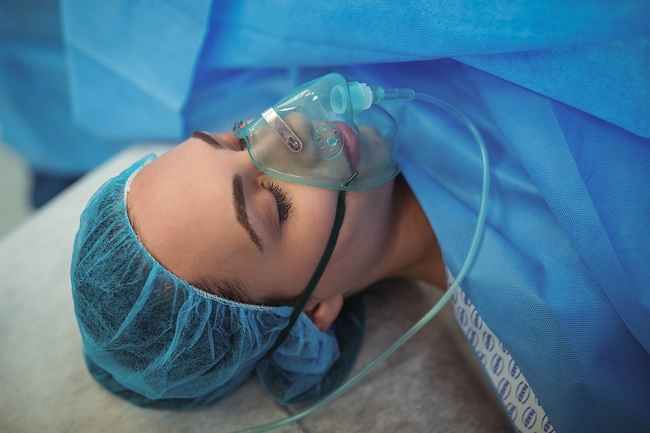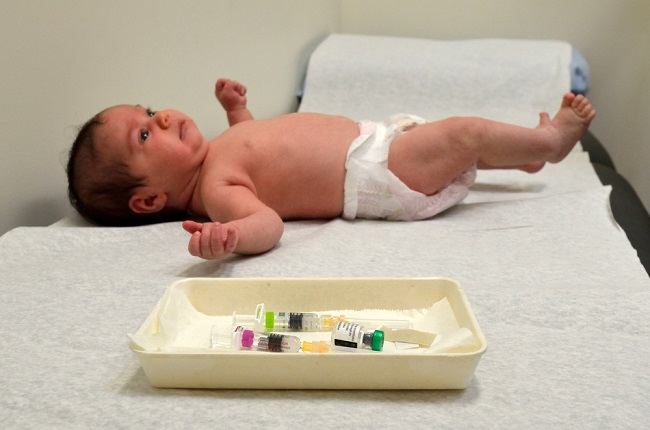Diabetic retinopathy is a disorder of the eye, which occurs in people with diabetes. At first, diabetic retinopathy often shows only mild symptoms, or even no symptoms at all. However, if left untreated, diabetic retinopathy can lead to blindness.

Causes of Diabetic Retinopathy
Diabetic retinopathy is a complication of diabetes that causes blockage of the blood vessels in the retina of the eye. The retina is the layer at the back of the eye that is sensitive to light. The function of the retina is to convert light that enters the eye into electrical signals, which are then transmitted to the brain. In the brain, these electrical signals will be perceived as images.
In order to function properly, the retina requires a supply of blood from the surrounding blood vessels. In people with diabetes, high blood sugar levels will slowly clog the blood vessels, so that the blood supply to the retina is reduced. As a result, the retina will form new blood vessels to meet the needs of blood. However, these newly formed blood vessels are not fully developed, so they are prone to rupture or leak.
Risk Factors for Diabetic Retinopathy
All people with diabetes are at risk of developing diabetic retinopathy, but the risk is higher if people with diabetes also have the following conditions:
- High cholesterol levels
- High blood pressure
- Is pregnant
- Smoke
Symptoms of Diabetic Retinopathy
Initially, diabetic retinopathy is asymptomatic. But over time, symptoms can appear and generally occur in both eyes. Symptoms of diabetic retinopathy include:
- Vision decreases gradually
- Looks like black spots on vision
- Looks like floating stains on sight (floaters)
- Shadow vision
- Difficult to distinguish colors
- Pain in the eye or red eyes
Although it does not always indicate diabetic retinopathy, it is advisable to immediately consult an ophthalmologist or ophthalmologist who specializes in vitreo-retinal when the above symptoms appear. Keep in mind, pregnancy can worsen the condition of diabetic retinopathy. Therefore, it is important for pregnant women to undergo regular eye examinations. To determine diabetic retinopathy, the doctor will look at the inside of the patient's eyeball with a special instrument called an ophthalmoscope. The condition of the inside of the eyeball will be more clearly seen when the slit in the middle of the eye or the pupil of the eye is wide open. Therefore, the doctor will give special eye drops, to dilate the pupil. These eye drops can blur vision for several hours. During the examination, the doctor can see some signs of diabetic retinopathy: If necessary, the doctor will perform further examinations, such as: In this examination, the doctor will inject a dye into a vein in the patient's arm. Then, the doctor will take pictures with a special camera when the dye enters the blood vessels in the eyeball. From these images, the doctor can see blockages or leaks in the blood vessels in the eye. Optical coherence tomography This is an examination that will give an idea of the thickness of the retina. Through OCT, doctors can see clearly if there is leakage of fluid into the retinal tissue. OCT examination is also used to assess the success of therapy. Treatment for diabetic retinopathy depends on its severity. For patients with early-stage diabetic retinopathy, treatment is not yet necessary. However, doctors will advise patients to regularly control blood sugar levels and eye health. Meanwhile, in advanced cases of diabetic retinopathy, doctors may recommend a number of medical procedures to patients, including: If not treated immediately, new blood vessels that grow abnormally in the retina can cause serious vision problems, even blindness. Some complications of diabetic retinopathy that may occur include: Vitreous bleeding. This condition occurs when blood enters the center of the eye, due to the rupture of newly formed blood vessels. If there is only a small amount of blood leaking out, the patient will only see a floating stain.floaters). However, if enough blood is leaked, the patient's vision will be completely blocked. Although vitreous bleeding usually disappears within weeks or months, the patient is still at risk of permanent vision loss if the retina has been damaged. Retinal detachment. New blood vessels that appear as a result of diabetic retinopathy can stimulate the formation of scar tissue on the retina. This scar tissue can pull the retina out of position, causing blurred vision, even leading to blindness. Glaucoma. When new blood vessels grow in the front of the eye, the tear ducts can become blocked. This condition will trigger glaucoma (increased pressure inside the eyeball). Glaucoma can damage nerves and cause vision problems. Blindness. If not treated immediately, diabetic retinopathy, glaucoma, or a combination of both, can lead to blindness. Regulating blood sugar levels to normal values is one way to prevent vision loss. In people with diabetes, the following steps can be taken to reduce the risk of developing diabetic retinopathy:Diabetic Retinopathy Diagnosis
Diabetic Retinopathy Treatment
Complications of Diabetic Retinopathy
Prevention of Diabetic Retinopathy









